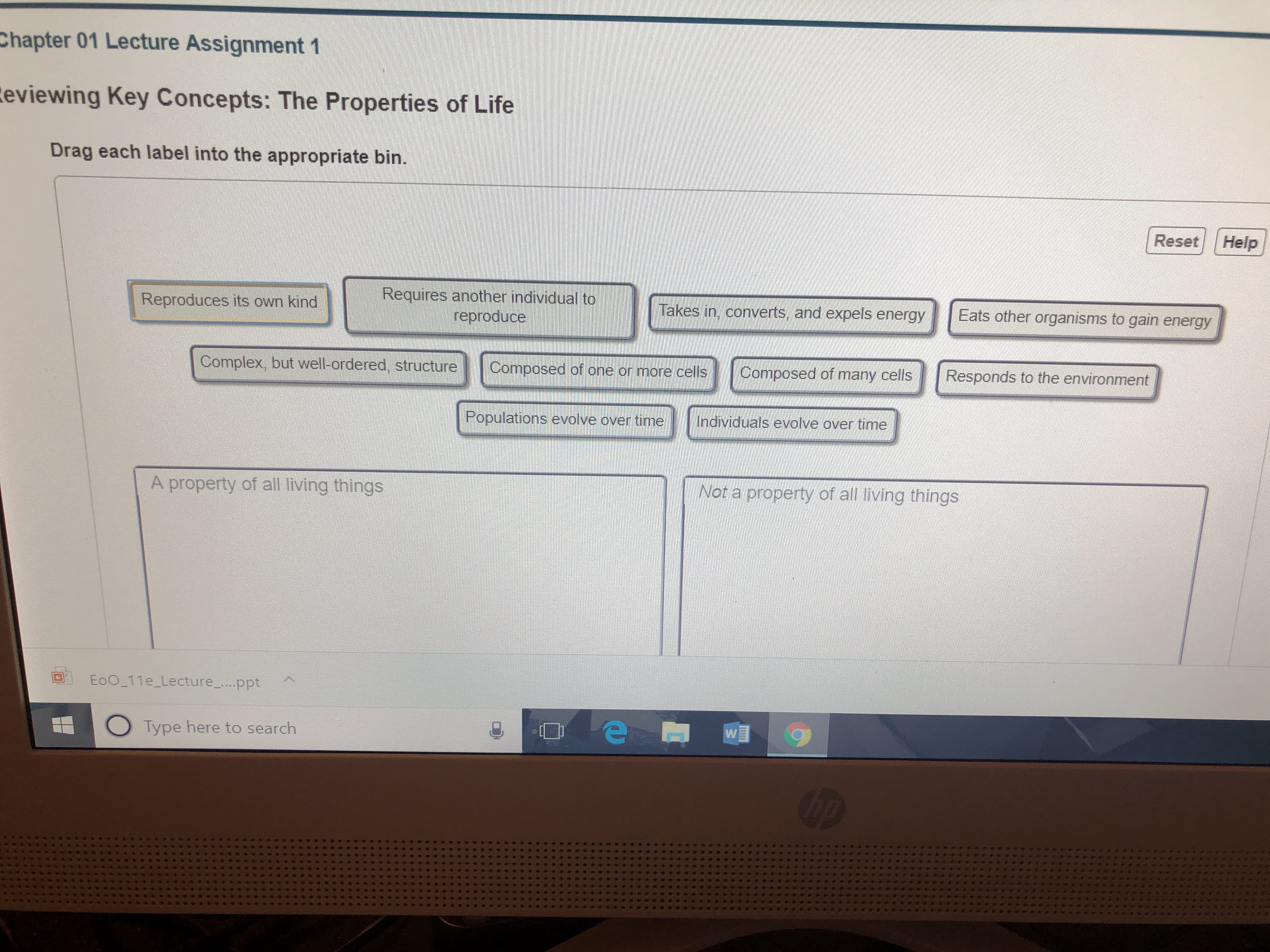Chapter 01 Lecture Assignment1 eviewing Key Concepts: The Properties of Life Drag each label into the appropriate bin Reset Help Requires another individual to reproduce Takes in, con verts, and expels energy Eats other organisms to gain energy Reproduces its own kind omplex,but well-ordered structure Composed of one or more cels Cm Responds to the environment Populations evolve over time individuals evolve over time A property of all living things Nat a property of all living things Type here to search
Life Forms
Life forms are the living entities or creatures present on Earth. They include all organisms ranging from tiny unicellular single-celled organisms such as bacteria, archaea, fungi, to giant organisms such as plants and animals.
What Makes an Organism
It refers to an individual that can exist on their own. It can carry out all the necessary functions which are important to lead a life. The organism can be simple and complex. A simple organism has a quite simple system to study and has evolved less, whereas a complex organism is always much more evolved. In a complex one, many systems are synchronized together to carry out life, while only one system performs all the vital functions in the simpler ones.
Carboxylic Acids and Their Derivatives
They are organic compounds containing carboxyl groups (-COOH). They may be aliphatic (RCOOH) or aromatic (Ar-COOH) depending upon whether the -COOH group is attached to the aliphatic chain (R) or aryl group (Ar) respectively. The general formula of these compounds is CnH2n+1COOH. The modified compounds formed by various reactions of carboxylic acids are referred to as its derivatives. They include esters, acid halides, amides and acid anhydrides.
Characteristics Of Life
Biology is the science that investigates life. Defining life forms is not always easy. Every organism tends to exhibit certain features that distinguish living and non-living forms. Some significant characteristics of life include genetic code, evolution, cellular organization, irritability, respiration, movement, regulation, homeostasis, growth and development, adaptations, and response to stimulus.
Why are the properties of all living things?

Trending now
This is a popular solution!
Step by step
Solved in 3 steps







